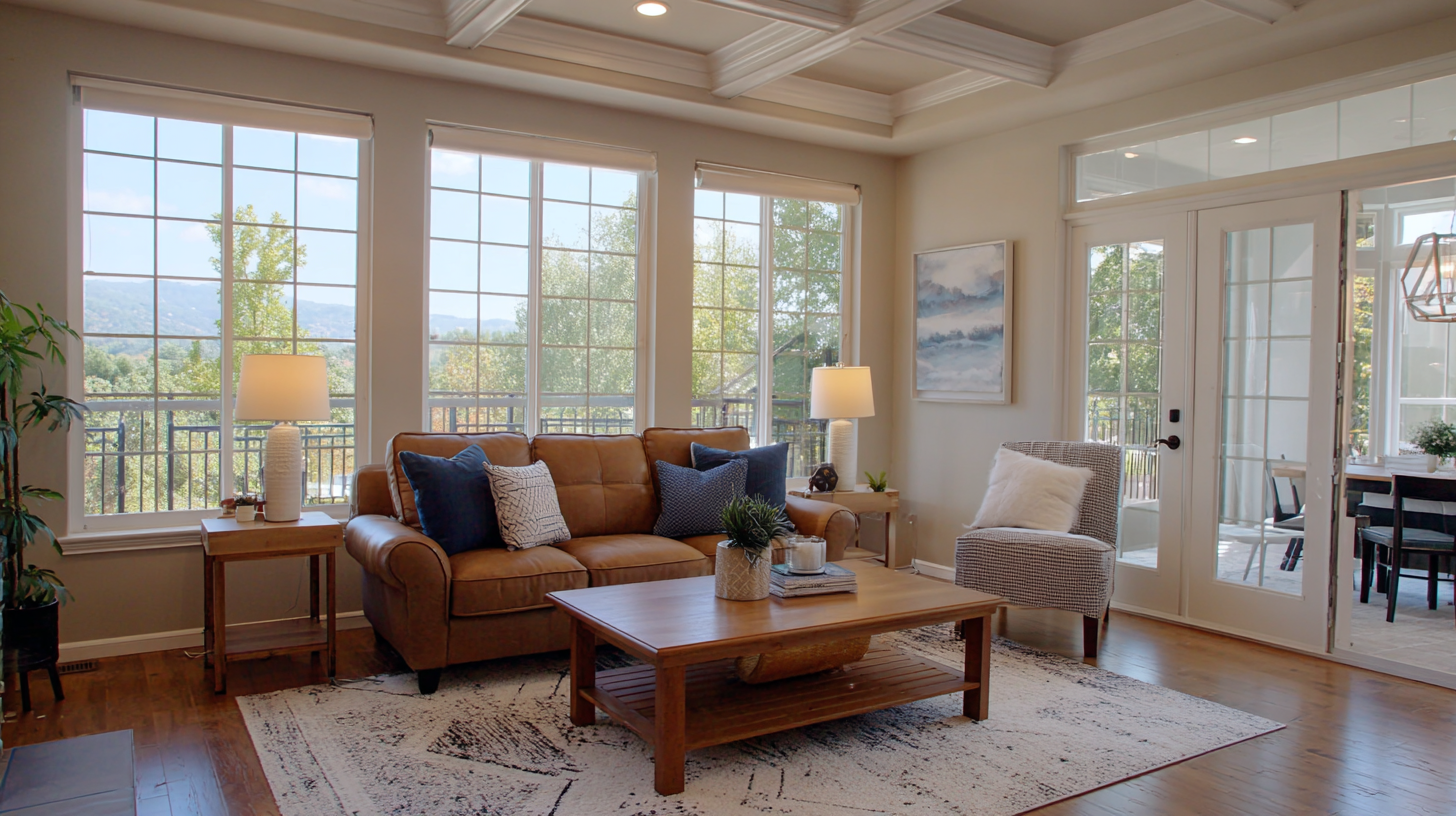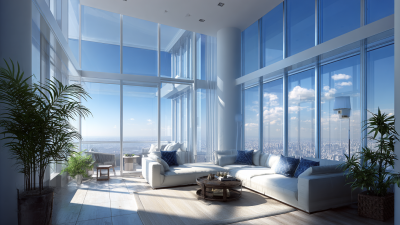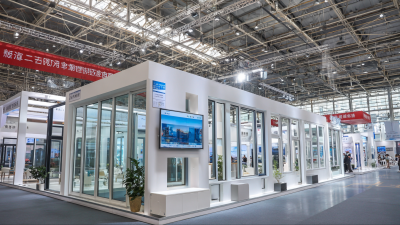Unlocking Energy Savings with Efficient Windows for Sustainable Living
In the quest for sustainable living, the importance of energy efficiency cannot be overstated. Efficient windows play a pivotal role in reducing energy consumption and enhancing the comfort of our homes. According to the U.S. Department of Energy, up to 30% of a home's heating and cooling energy can be lost through inefficient windows. By investing in energy-efficient window technologies, homeowners can not only significantly lower their energy bills—by an average of 12% to 20%—but also contribute to a reduction in greenhouse gas emissions. A report by the National Renewable Energy Laboratory highlights that upgrading to efficient windows can lead to energy savings of over $500 annually, depending on the region and specific conditions. As the global movement towards greener living continues to grow, understanding the benefits that efficient windows provide becomes essential for both environmental sustainability and economic savings.

Table of Contents
[Hide]
Understanding the Benefits of Energy-Efficient Windows for Sustainable Homes
Energy-efficient windows play a pivotal role in enhancing the sustainability of homes, providing substantial benefits in reducing energy consumption. According to the U.S. Department of Energy, nearly 30% of a home's heating and cooling energy is lost through its windows. By upgrading to energy-efficient windows, homeowners can significantly decrease their energy bills, potentially saving up to $465 annually, depending on their local climate and energy prices. These windows feature advanced glazing technologies that minimize heat transfer, ensuring that homes remain comfortable year-round while using less energy.

Furthermore, energy-efficient windows contribute to a reduced carbon footprint. The Environmental Protection Agency (EPA) estimates that for every kilowatt-hour of electricity saved, approximately one pound of carbon dioxide emissions are prevented. By replacing standard windows with energy-efficient alternatives, a typical household can reduce its greenhouse gas emissions by 1,500 pounds annually. Investing in such windows not only enhances the home's sustainability credentials but also promotes a healthier indoor environment by reducing reliance on artificial heating and cooling systems. Through these technologies, homeowners can achieve significant energy savings while contributing positively to the environment.
Choosing the Right Type of Energy-Efficient Windows for Your Living Space
When it comes to selecting energy-efficient windows, homeowners are increasingly focusing on solutions that combine aesthetics with functionality. According to industry reports, U.S. homeowners can save between 10% to 25% on energy costs by upgrading to energy-efficient windows. These savings come not only from reduced heating and cooling expenses but also from improved indoor comfort and enhanced property value.
One popular trend is the shift toward open living spaces, where windows play a critical role in maximizing natural light while minimizing energy loss. High-performance glass options, such as low-emissivity (Low-E) coatings, provide excellent insulation and ultraviolet protection, making them an ideal choice for modern homes. Homeowners should also consider the window frame materials; for instance, fiberglass frames offer superior insulation and durability compared to traditional wood or aluminum options.
**Tips:** When selecting windows, look for ENERGY STAR® ratings, which indicate a window's energy efficiency. Additionally, remember to verify the window's U-factor; the lower the U-factor, the better the window can insulate your home. Investing in the right energy-efficient windows not only enhances functionality but also aligns with the growing demand for sustainable living solutions.
Energy Efficiency of Window Types
Installation Tips for Maximizing the Efficiency of Your New Windows
Installing energy-efficient windows is an essential step toward sustainable living, as it directly impacts your home’s energy consumption. According to the U.S. Department of Energy, upgrading to energy-efficient windows can reduce your energy bills by 7-15%. Proper installation is crucial; even the best windows must be installed correctly to perform at their optimal level. Ensure that the window frames are level and square, and use high-quality insulating materials to minimize air leaks.

Moreover, consider the timing of your installation. During milder weather conditions, generally in late spring or early fall, your windows can be installed with less risk of thermal stress. This is important since drastic temperature changes can affect the seals and overall integrity of the installation. Additionally, using modern technologies such as specialized window seals and high-performance glazing can significantly enhance your windows' efficiency. According to the National Fenestration Rating Council, windows with a low U-factor and low solar heat gain coefficient are best for reducing energy loss, making your investment not only an eco-friendly choice but also a profitable one in the long term.
Maintaining Your Energy-Efficient Windows for Long-Term Savings
Maintaining energy-efficient windows is crucial for maximizing their long-term benefits. Regular inspections should be a priority, as this helps in identifying any signs of wear or damage. Checking the seals is essential; if they appear cracked or broken, it’s time to consider resealing or replacing them. Keeping the frames clean and free from debris is equally important, as dirt can impede their insulating abilities. Simple maintenance tasks, such as cleaning the glass and checking for condensation, can significantly enhance the windows’ performance.
In addition to routine maintenance, homeowners should also be aware of the weatherstripping around their windows. Replacing worn-out weatherstripping can prevent drafts and further improve energy efficiency. Consider investing in window treatments like thermal curtains or shades, which not only provide privacy but also add an extra layer of insulation. By prioritizing these maintenance tasks, homeowners can enjoy the savings and comfort that energy-efficient windows bring, ensuring their investment in sustainable living pays off for years to come.
Unlocking Energy Savings with Efficient Windows for Sustainable Living
| Feature | Description | Potential Savings (%) | Maintenance Tips |
|---|---|---|---|
| Low-E Glass | Reflects infrared energy, keeping heat inside during winters and outside during summers. | 15-30% | Regularly clean the surface to maintain clarity and efficiency. |
| Argon Gas Fill | Insulating gas that reduces heat transfer to improve energy efficiency. | 20-25% | Check for air leaks around the window frames and seals. |
| Double or Triple Glazing | Multiple layers of glass to improve insulation and reduce noise. | 30-50% | Inspect and replace damaged or fogged units promptly. |
| Low-Temperature Coatings | Coatings applied to glass that improve energy efficiency by reflecting heat. | 10-20% | Ensure coatings are not scratched during cleaning; use recommended products. |
Exploring Financial Incentives for Upgrading to Efficient Window Solutions
Upgrading to efficient windows not only enhances the comfort and aesthetics of your home but can also lead to significant
financial savings. Energy-efficient windows reduce heating and cooling costs by minimizing thermal loss, making homes more sustainable and reducing environmental footprints. Many homeowners may not be aware of the array of financial incentives available for such upgrades, which can include
tax credits, rebates, and low-interest loans. These incentives can greatly offset the initial costs associated with purchasing and installing high-performance windows.
Tip: Research local and federal programs that offer financial assistance for energy-efficient home upgrades. Websites like ENERGY STAR and Database of State Incentives for Renewables & Efficiency (DSIRE) can provide valuable information tailored to your area.
Furthermore, many utility companies provide rebates for energy-efficient improvements, including window upgrades. These programs aim to encourage residents to lower energy consumption, ultimately benefiting both the environment and their wallets. Engaging with your local energy provider can uncover additional savings opportunities that may be available for your window upgrade.
Tip: Consider consulting with a window specialist who can inform you about the best options and financial incentives specific to your circumstances, ensuring you maximize savings while contributing to a sustainable future.
Related Posts
-

Exploring Unique Alternatives to Traditional Big Windows for Modern Spaces
-

What are the Benefits of Choosing Energy Efficient Windows for Your Home
-

Ultimate Guide to Choosing the Perfect Style Windows for Your Home
-

Exploring Alternative Designs for Doors and Windows: Innovative Options for Every Home
-

Ultimate Guide to Selecting the Best Insulated Windows for Your Global Sourcing Needs
-

Driving Trends in Style Windows Industry at the 2025 China Import and Export Fair